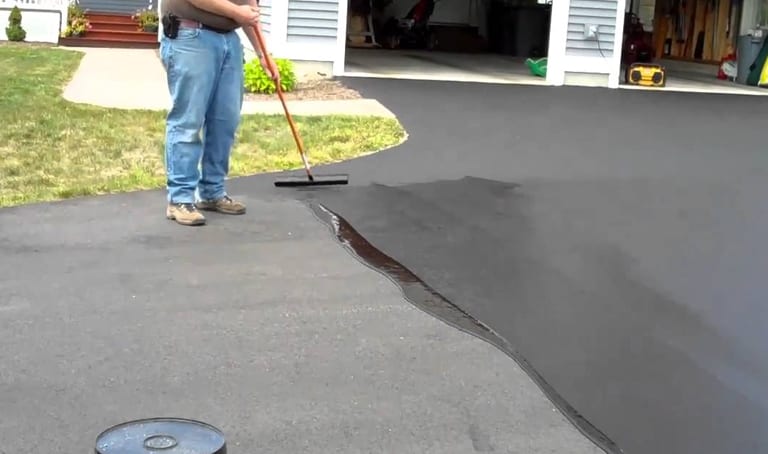Warm Mix Asphalt: A Lasting Solution for Pavement
Warm Mix Asphalt (HMA) has arised as a leading sustainable selection for pavement solutions, providing a myriad of ecological advantages and innovative technologies. As the need for environment-friendly building and construction practices grows, checking out the subtleties of HMA's sustainability can give useful understandings right into the future of sidewalk services.
Environmental Advantages of Hot Mix Asphalt

Additionally, Hot Mix Asphalt assists to minimize urban warmth island effects. Its dark shade soaks up sunshine, lowering the quantity of warm showed back into the environment contrasted to lighter-colored pavements. This can reduce ambient temperatures in city areas, decreasing the demand for cooling and inevitably minimizing power usage.
Additionally, Warm Mix Asphalt adds to improved stormwater management. Its permeable nature permits water to recharge and penetrate the sidewalk groundwater supplies, lowering overflow and the risk of flooding. These environmental benefits make Hot Mix Asphalt a lasting selection for leading highways and roads.
Energy Performance in HMA Production
Is energy effectiveness a critical element in the production of Hot Mix Asphalt (HMA)? Energy plays a considerable function in the production of HMA, affecting both price and ecological sustainability. One vital facet of power efficiency in HMA manufacturing is the usage of warm mix asphalt (WMA) technologies.
Moreover, developments in plant innovations have actually led to even more energy-efficient HMA production processes. By maximizing energy use in HMA production, the sector can minimize its carbon impact while keeping top notch sidewalk products.
Recyclability of Warm Mix Asphalt
The recyclability of Warm Mix Asphalt (HMA) is a crucial facet of its sustainability and long-lasting ecological effect. HMA is among one of the most recycled materials in the USA, with over 100 million lots of recovered asphalt pavement (RAP) being recycled yearly in brand-new pavement building and construction. Reusing HMA provides a number of environmental advantages, such as reducing the need for virgin products, decreasing power intake throughout manufacturing, and lowering the amount of waste sent to landfills.
The process of reusing HMA involves milling the existing sidewalk, squashing it right into smaller pieces, and mixing it with new aggregate and asphalt binder to produce a recycled mix. In general, the recyclability of HMA plays a substantial duty in advertising sustainable methods within the pavement sector.

Long-Term Efficiency of HMA
Asphalt pavements show durability and resilience over a prolonged period, reflecting the long-term performance of Hot Mix Asphalt (HMA) In addition, advancements in HMA modern technology, such as the use of polymer-modified binders and cozy mix asphalt, have actually better enhanced the toughness and durability of HMA pavements. By prioritizing quality building and construction and upkeep methods, HMA proceeds to confirm itself as a cost-efficient and sustainable service for long-lasting pavement infrastructure.
HMA: Toughness and Sustainability
Demonstrating both toughness and sustainability, Warm Mix Asphalt (HMA) has actually ended up being a foundation in the building and construction of resilient sidewalk infrastructures - commercial parking lot paving. HMA's sturdiness comes from its capability to stand up to hefty loads, extreme climate conditions, and high web traffic quantities, making it a reliable option for roadways, highways, and flight terminal paths. The composition of HMA, which normally includes accumulations, binder, and filler, plays a critical duty in boosting its durability and resistance to use and tear
Moreover, HMA's sustainability hinges on its recyclability and energy-efficient manufacturing that site process. The capability to reuse reclaimed asphalt sidewalk (RAP) in brand-new HMA combinations minimizes the demand for virgin products and minimizes the environmental influence of pavement my review here construction and maintenance. Furthermore, the energy effectiveness of creating HMA lies in its lower mixing temperatures contrasted to various other pavement products, leading to reduced power intake and greenhouse gas discharges.
Conclusion
In verdict, hot mix asphalt (HMA) supplies a sustainable option for pavement with its ecologically friendly features. HMA's recyclability, energy effectiveness in manufacturing, and long-lasting toughness make it an environment-friendly choice for roadway construction.
HMA is one of the most recycled materials in the United States, with over 100 million loads of redeemed asphalt pavement (RAP) being recycled yearly in brand-new sidewalk construction.The procedure of reusing HMA involves milling the existing sidewalk, squashing it right into smaller sized items, and blending it with brand-new aggregate and asphalt binder to produce a recycled mix.Asphalt sidewalks demonstrate toughness and resilience over an extended period, reflecting the long-lasting efficiency of Hot Mix Asphalt (HMA) In addition, improvements in HMA modern technology, such as the use of polymer-modified binders and cozy mix asphalt, have actually even more enhanced the toughness and longevity of HMA pavements. The ability to recycle reclaimed asphalt sidewalk (RAP) in new HMA mixes lowers the need for virgin products and minimizes the environmental influence of pavement their explanation building and construction and upkeep.